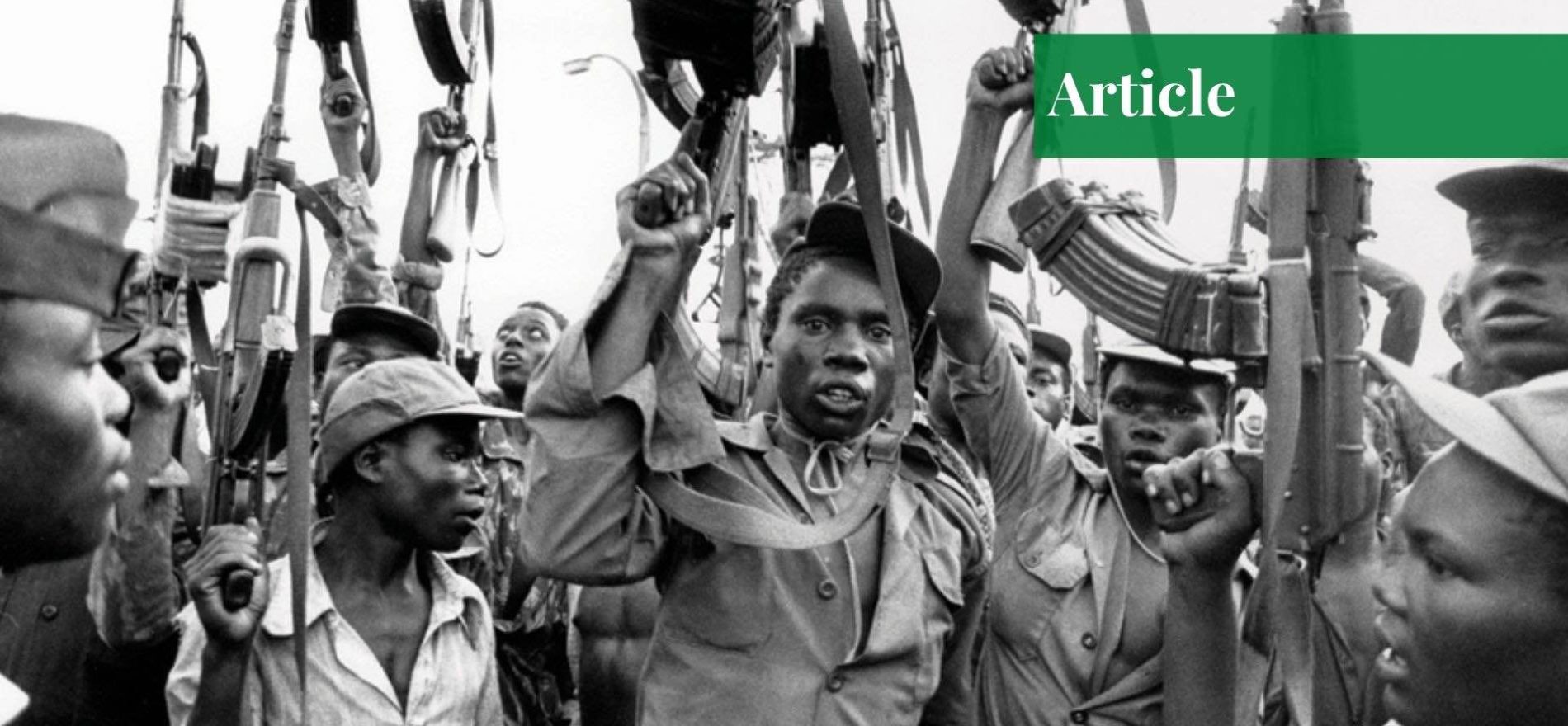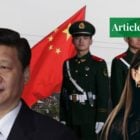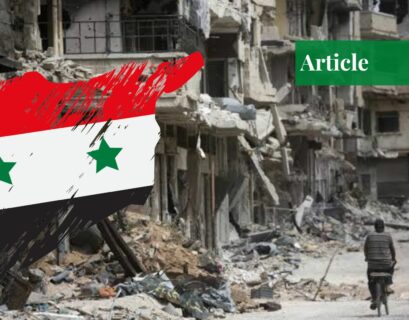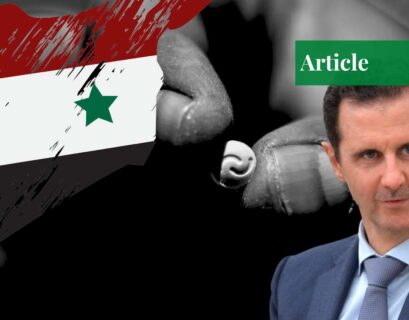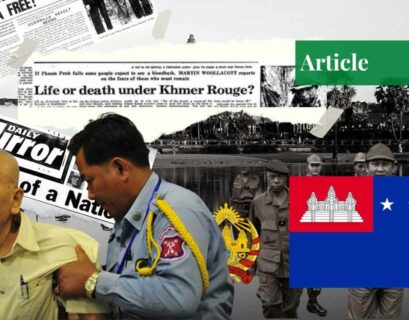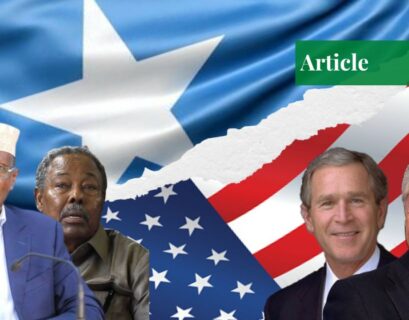Hafsa Ammar is a graduate of the National Defence University, Islamabad. Her areas of expertise are narrative building and propaganda warfare, centered around the Soviet Union and modern-day Russia.
Conflicts & their Transformation
Conflicts — the civil war in Mozambique, in this case — are open-ended opportunities for transformation and a complete reevaluation of the current systems which may be contributing to episodic violence. They are not static, nothing ever really is, and cannot be dealt with in a model that isn’t as equally dynamic as the said conflict. The conflict transformation model presented by Raimo Vayrynen is one that is not only dynamic but also separates actors, context, structure, issue, rules, and personal transformations to analyze them and their impact differently.
The Civil War in Mozambique
The 16-year civil war in Mozambique between the FRELIMO government and RENAMO (Mozambiquan National Resistance Movement) NSA is a well-fitting example as it shows how transformation at each level led to peace. It is a prime example of proactive violence as the rebel group was looking to challenge the status quo through political means.
They had two objectives: recognition as a legitimate political party and democratization of Mozambique. The civil war erupted soon after Mozambique gained independence and followed the international trends of the time as it was an ideology-based war. The FRELIMO (Frente de Libertação de Moçambique) party’s socialist government and policies were challenged and opposed by RENAMO (Resistência Nacional Moçambicana), the rebel group that demanded a more democratic form of government.
To understand, deconstruct, and resolve a conflict so deeply embedded in society as this war, we need to implement various conflict transformation models in such a case study and study their impacts. Conflict transformation takes place on several platforms and does so simultaneously as to tackle the issues comprehensively and permanently.
The Vayrynen Conflict Transformation Model
The Vayrynen conflict transformation model focuses on four major (actor, issue, structure, rule) transformations and two sub-divisions (personal and context) underneath these. Raimo Vayrynen examines the social functions and impacts of violence and how these can be tackled and lead to a ‘bottom-up’ approach to conflict transformation.
The ABC triangle is another great analytical tool which we can use to identify the root causes of a conflict. It was put forth by Johan Galtung which highlights three key aspects of a conflict. ‘A’ refers to Attitude – emotional, cognitive, and conative elements; ‘B’ refers to Behavior – whether the parties involved in the conflict are leaning towards cooperation or coercion; and ‘C’ refers to Contradictions – these are the underlying root causes or fault lines of a conflict.
Combining it with the Vayrynen conflict transformation model helps us not only identify the causes but also highlights the areas where transformation is necessary. If we are to draw some correlation between Johan Galtung’s ABC Triangle and Vayrynen’s conflict transformation model, we would see distinct categorization. The ‘attitudes’ and ‘behavior’ would be discussed under actor and personal transformations, while ‘contradictions’ would fit under contextual, rule, structural, and issue transformations.
Actor Transformation
Background
This level is part of a bottom-up approach as it starts at the grassroots level, direct from the actors that are involved in the conflict. These actors can include functional elites, politicians, military officials, economists, civilians, etcetera. These actors are better understood as ‘agents’ who exercise their agency in propagating the conflict.
Agents refer to any actor which creates the narrative. These actors can use their agency/will to transform the conflict. This transformation can be reflected in either the changing attitudes of the actors or in their modified goals.
The major actors in the Mozambique civil war were the FRELIMO Government, headed by Samora Machel, formed in 1962 (during the war of independence) and the opposition was RENAMO, the Mozambican National Resistance, formed in 1975 as a militant organization.
Mozambique gained independence on 25th June 1975 from the colonial clutches of Portugal and came out of the war as a one-party state. It started out as a socialist state and soon faced resistance in the form of RENAMO which operated with an agenda of democratization and tactics of terror campaigns and economic sabotage.
Transformation
After 16 years of the grueling war, both major actors had exhausted not only their resources but motivations as well which is why there was equal participation from both sides in the initiation of dialogue and peace talks. The Christian Church played a major role in facilitating better relations between both parties and changing their stance from antagonistic to compromising.
Leadership adjustments or influences can change the tide of war. RENAMO had a tight hierarchy with close ranks which was highly respected by the militants. The willingness of RENAMO to be part of table talks reduced conflict greatly.
Personal Transformation
Background
Personal transformation refers to changes at a moral and ethical level within individual leaders or groups. It involves perception and narrative building through discourse, CBMs, and elite bargaining.
Transformation
After the 16-year long war which lead to mass deaths, political instability, and the economic downfall of a newborn state, the people were exhausted thus the attempts at reconciliation at the grassroots level were pretty easy. The creation of the political identity of RENAMO further cemented stability and peace in the people as they saw it as their reigning champion.
Issue Transformation
Background
The major issues in which the conflict was embedded were of ideological nature; political ideologies of socialism were clashing with the wave of democratization. Initially, RENAMO was also backed by the Catholic Church, garnering great support as Mozambique is majority Roman Catholic. RENAMO used the religion card to exploit the national sympathies. This war was another of the many proxy wars being fought between the USSR and the US during the cold war, hence the ideological roots.
Transformation
Issue transformation concerns the reframing of positions and changing mindsets regarding key issues which are causing such a harsh divide between both parties; the goal is to heal the unconceivable bridge of communication. Issue transformation in the Mozambican war was found when both parties stumbled upon common grounds to address the points of contention.
First came the issue of religious motivations of the civilians; as the Church was backing RENAMO, the Catholic masses were automatically aligned against their government. The FRELIMO government looked to transform this narrative by inviting Pope John Paul II for a state visit. This helped soothe the turbulent relations between state and society.
Rules Transformation
Background
Rules dictate the norms of the interactions between the parties including regulations, laws, sanctions, policies, etcetera. The socialist policies of the FRELIMO government and refusal of recognition in regard to the RENAMO organization created friction in the conflict.
Transformation
RENAMO represented the people and used their grievances against the state as their tagline. As the war-fatigue set in and the FRELIMO government accepted the opposition as more than just a militant organization and as a legitimate political party that represented the people’s interests, it completely changed the rules of the game.
Suddenly the balance of power and status was re-established which led to the war ending and the conflict shifting into the political push and pull of elections. This path, however, was not wrought with violence and provided the state with an open road to harmony between the government and its people.
Structural Transformation
Background
Structural transformation has the most significant impact on conflict transformation as it uproots the entire system. It often overlaps with rules and context transformation as all three look towards restructuring of some sort.
Transformation
The FRELIMO government signed agreements with South and West Africa, namely the Nkomati Accords, due to the increased influence of RENAMO. The government started turning towards western ideals to quell societal disharmony, and it did this through economic and political transitions of state. The military stalemate had created incentives for the government to look for a way out of this fatigue.
It was necessary to do so in time because the financial and material costs were skyrocketing by the minute and as the state had just recently gained independence, it could not afford more losses. This restructuring ushered in a new era of multi-party politics which was new for the one-party state.
Contextual Transformation
Background
It refers to the changes in a conflict’s context and workings. Change in context has a direct impact not only on party positions but also on motives and action-reaction policies as well. A change in context is directly proportional to a change in motives and the system (regional, national, or international).
Transformation
Due to the end of the cold war, both RENAMO and FRELIMO faced significant losses as the Eastern bloc collapsed and the funding to both from external actors eventually dried out. The context of the international system changed too, as the world moved from not only bipolarity to unipolarity and the new superpower was the champion of the anti-Communist and anti-Socialist agendas. Socialism was an ideology that FRELIMO could no longer fund and get aid for free anymore.
Any future aid they received came with conditions that nudged both parties towards peace talks. The IMF also proposed programs for Mozambique that worked to repair the economy only once both parties gave up the internal strife to heal the state together. Severe droughts and impending famines also put state priorities into perspective for both actors and diverted their attention from further fostering the stalemate.
Conclusion
Finally, the peace accords, known as the Rome General Peace Accords, took place in Italy on 4th October 1992. These accords allowed peacekeeping forces of the United Nations to enter the picture and, from there, the conflict smoothed out. It was mainly the loss of external aid and development of the economy through economic rehabilitation projects that fully transformed the conflict-prone state into a prosperous one with political and societal harmony.
If you want to submit your articles, research papers, and book reviews, please check the Submissions page.
The views and opinions expressed in this article/paper are the author’s own and do not necessarily reflect the editorial position of Paradigm Shift.
